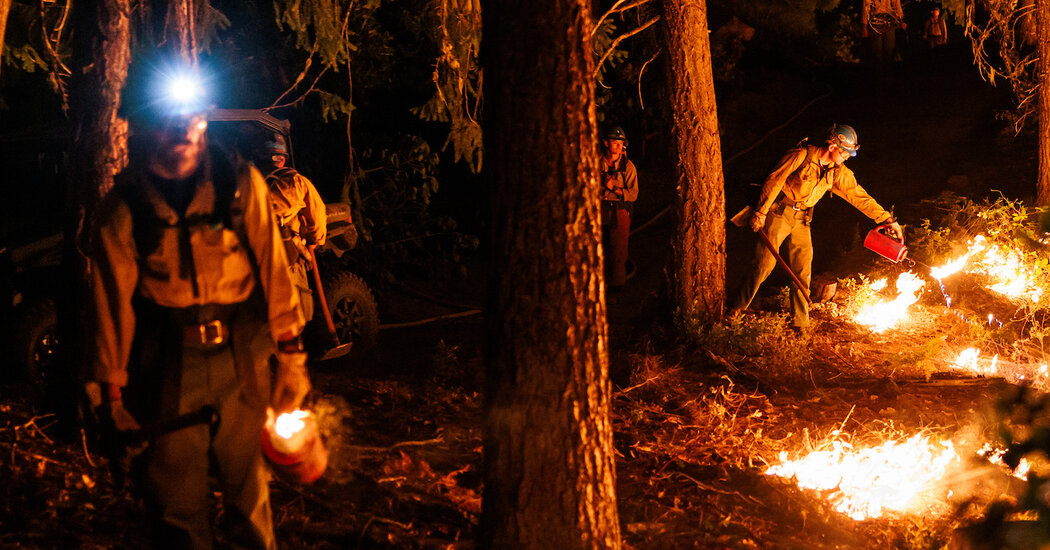Luckily for us, the 2023 fire season in California was exceptionally mild.
Wildland fires burned roughly 325,000 acres and damaged 70 buildings across the state last year, making the fire season one of the least destructive in the past decade and a significant departure from some terrible recent fire years.
Nearly eight times as many acres — more than 2.5 million in all — burned in 2021, for example, as well as 3,500 structures. And the year before that was California’s worst on record, with 4.3 million acres burned.
So what kind of fire season are we in for this year?
Like 2023, this year has been a wet one. State officials announced on Tuesday that the depth of the snowpack in the Sierra Nevada stood at 110 percent of the average for this time of year, an encouraging sign that the state would have plenty of water in the months ahead.
After the wet winter, vegetation in the state isn’t as parched as it would be during a drought, so wildfire activity is likely to be pretty low in the spring and early summer, Daniel Swain, a climate scientist at the University of California, Los Angeles, said in an online briefing this week.
But the year probably won’t stay as quiet as 2023 was. This year’s wet weather hasn’t been as extreme as last year’s — some inland cities, like Fresno and South Lake Tahoe, actually received less rain than usual this year — so plants and soil are more likely to dry out over the rest of this year than they were last year.
“I would be somewhat surprised if this year was not significantly more active,” Swain said.
Last summer was the coolest in California in more than a decade. Then the storm system that had been Hurricane Hilary dumped so much rain on Southern California in August — typically the peak of fire season — that it effectively ended the season there.
It’s unlikely that anything like that will happen again this year.
The danger months this year, if there are to be any, will probably be from August to October, Swain said, when there’s been enough warm, dry weather to strip vegetation of the moisture it accumulated in the winter and spring. It’s happened before that a rainy winter was followed by a fire-heavy summer and fall.
“The first half of fire season is going to tell us very little,” Swain said.
Tell us
After a lush winter, flowers are in bloom across California. Send us your best photos of the glorious springtime display to CAtoday@nytimes.com, and we may publish them in the newsletter. Please include your full name and the city in which you live.
And before you go, some good news
Sonoma County may be the heart of California’s wine country, but the region also offers an array of outdoor activities and cultural attractions for those seeking an alcohol-free visit, The Wall Street reports.
The county stretching north from the Bay Area includes more than 50 miles of Pacific coastline and offers parks, rolling farmland and redwood forests for visitors to explore. The county has almost 150 miles of hiking trails and several Michelin star-rated restaurants. And for those still looking to capture the fun of a wine tasting, visitors to the city of Healdsburg can follow a “mocktail trail” studded with bars and restaurants that offer inventive alcohol-free drinks.




